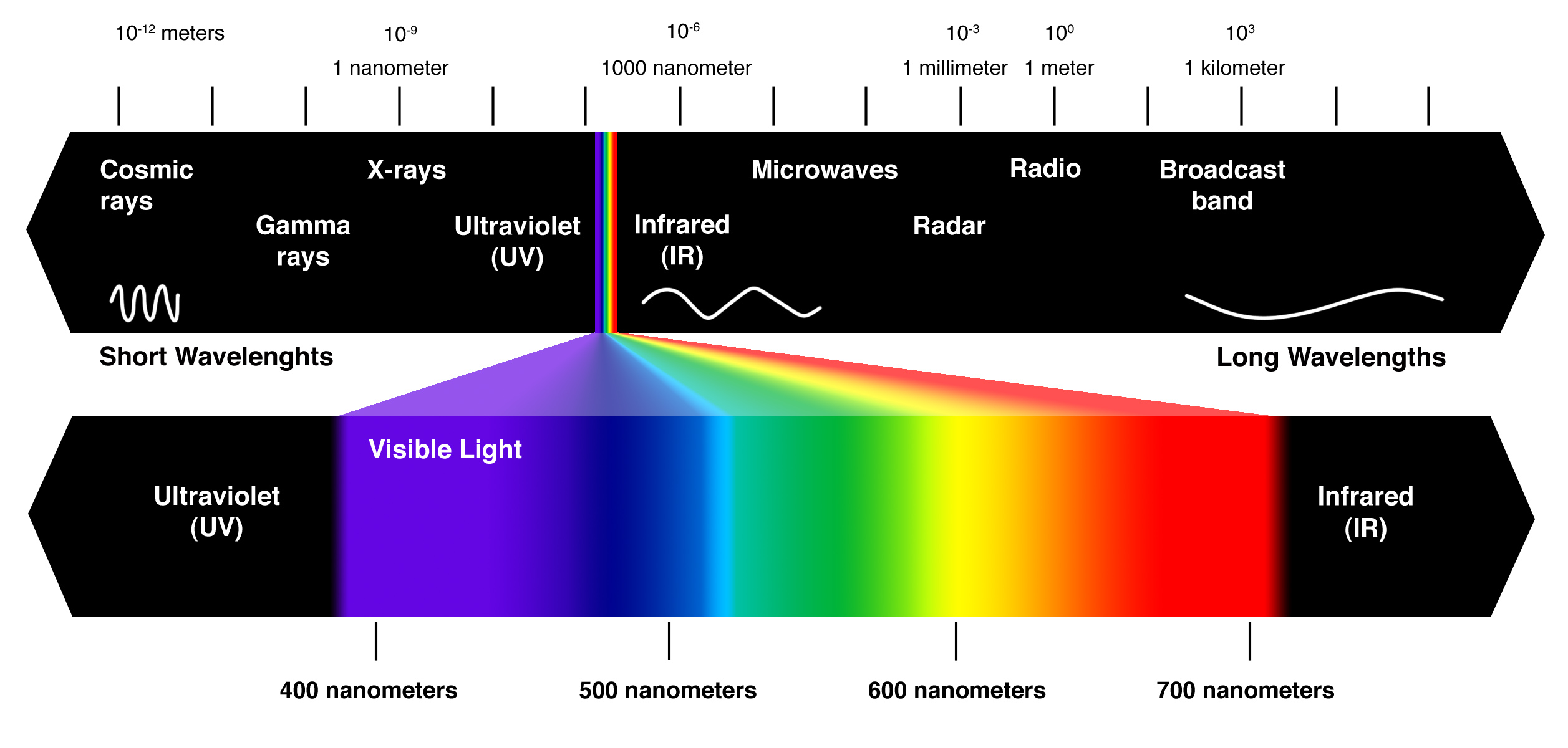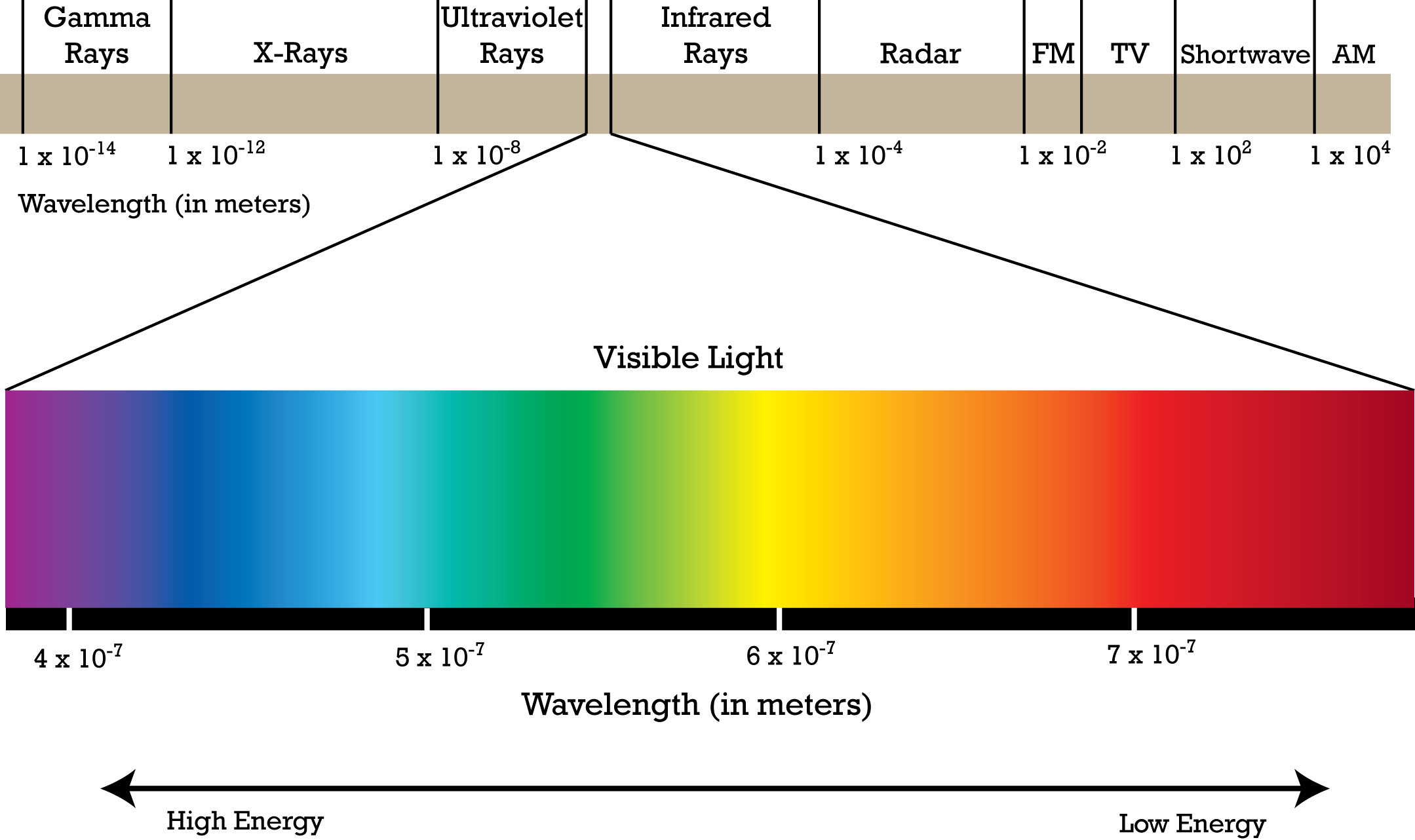what is the electromagnetic spectrum

Have you ever wondered what makes up the world around us? Scientists have discovered that light, which we see in different colors, is just one part of a much larger spectrum of electromagnetic radiation. This radiation includes everything from radio waves to gamma rays and is used in a variety of applications, including remote sensing technology.
Electromagnetic Spectrum

Abstract
The electromagnetic spectrum consists of a wide range of electromagnetic radiation, including radio waves, microwaves, infrared radiation, visible light, ultraviolet radiation, X-rays, and gamma rays. This spectrum is important because it is used in a variety of applications, including communication technology, remote sensing, and medical imaging.
Introduction
The world around us is filled with different types of electromagnetic radiation, some of which we can see and some that we cannot. Light, which we see in different colors, is just one part of a much larger spectrum of electromagnetic radiation. This spectrum ranges from radio waves, which have the longest wavelength, to gamma rays, which have the shortest wavelength. Each type of electromagnetic radiation has its own unique properties and uses in the world around us.
Content
Radio waves are the longest wavelength and lowest frequency part of the electromagnetic spectrum. They are used in communication technology, such as radio and television broadcasting. Microwaves, which have shorter wavelengths and higher frequencies than radio waves, are used in microwave ovens and cell phone technology.
Infrared radiation, or heat radiation, is the part of the electromagnetic spectrum that we feel as heat. This type of radiation is used in a variety of applications, including remote sensing technology. Remote sensing technology uses infrared radiation to detect changes in temperature, which can be used to monitor the environment.
Visible light, which includes all the colors we can see, is also part of the electromagnetic spectrum. This type of radiation is used in photography and color television technology. Ultraviolet radiation, which has shorter wavelengths and higher frequencies than visible light, is used in tanning beds and is responsible for sunburns.
X-rays and gamma rays are the highest energy and shortest wavelength part of the electromagnetic spectrum. These types of radiation are used in medical imaging technology, such as X-ray machines and CT scans. They are also used in radiation therapy to treat cancer.
Conclusion
The electromagnetic spectrum is a fascinating subject that has many practical applications in the world around us. From communication technology to medical imaging, electromagnetic radiation is an important tool that has revolutionized the way we live and work. Understanding this spectrum can help us to better appreciate the science and technology that makes our world possible.
Electromagnetic Spectrum | Communicating Science (14w112)

Abstract
The electromagnetic spectrum is a range of electromagnetic radiation that encompasses everything from radio waves to gamma rays. This spectrum is used in a variety of applications, including communication technology and remote sensing.
Introduction
The electromagnetic spectrum is a fascinating subject that has many practical applications in the world around us. It includes everything from radio waves to gamma rays, with each type of radiation having its own unique properties and uses. By understanding this spectrum, we can better appreciate the science and technology that makes our world possible.
Content
Radio waves are the longest wavelength and lowest frequency part of the electromagnetic spectrum. They are used in communication technology, such as radio and television broadcasting. Microwaves, which have shorter wavelengths and higher frequencies than radio waves, are used in microwave ovens and cell phone technology.
Infrared radiation is the part of the electromagnetic spectrum that we feel as heat. This type of radiation is used in a variety of applications, including remote sensing technology. Remote sensing technology uses infrared radiation to detect changes in temperature, which can be used to monitor the environment.
Visible light is the part of the electromagnetic spectrum that includes all the colors we can see. This type of radiation is used in photography and color television technology. Ultraviolet radiation, which has shorter wavelengths and higher frequencies than visible light, is used in tanning beds and is responsible for sunburns.
X-rays and gamma rays are the highest energy and shortest wavelength part of the electromagnetic spectrum. These types of radiation are used in medical imaging technology, such as X-ray machines and CT scans. They are also used in radiation therapy to treat cancer.
Conclusion
The electromagnetic spectrum is a vast and complex subject that has many practical applications in the world around us. By understanding this spectrum, we can better appreciate the science and technology that makes our world possible. From communication technology to medical imaging, electromagnetic radiation has revolutionized the way we live and work.
Know Basics of Remote Sensing Quickly and Become Expert

Abstract
Remote sensing technology uses electromagnetic radiation to detect changes in temperature, which can be used to monitor the environment. This type of technology is becoming increasingly important for monitoring climate change and natural disasters.
Introduction
Remote sensing technology is a type of technology that uses electromagnetic radiation to gather information about the environment. This technology has become increasingly important in recent years for monitoring climate change, natural disasters, and other environmental concerns. By understanding the basics of remote sensing, you can become an expert in this fascinating field.
Content
Remote sensing technology uses a variety of sensors to collect data from the environment. These sensors can be mounted on airplanes or satellites and can gather information about temperature, humidity, and other environmental factors. This information can then be used to create detailed maps and models of the environment.
One of the key principles of remote sensing is that different types of surfaces reflect and absorb different types of electromagnetic radiation. By analyzing the reflected radiation, scientists can determine what types of surfaces are present in a given area. This information can be used to monitor changes in land use, vegetation cover, and other environmental factors.
Remote sensing technology is also used to monitor climate change. By gathering data about temperature, humidity, and other environmental factors, scientists can track changes in the environment over time. This information is important for predicting future changes and for developing strategies to mitigate the effects of climate change.
Conclusion
Remote sensing technology is a fascinating field that has many practical applications. From monitoring natural disasters to tracking climate change, this technology has become an important tool for understanding the world around us. By understanding the basics of remote sensing, you can become an expert in this field and contribute to the important work of monitoring and protecting our environment.

Source image : www.infohow.org

Source image : blogs.ubc.ca

Source image : grindgis.com






